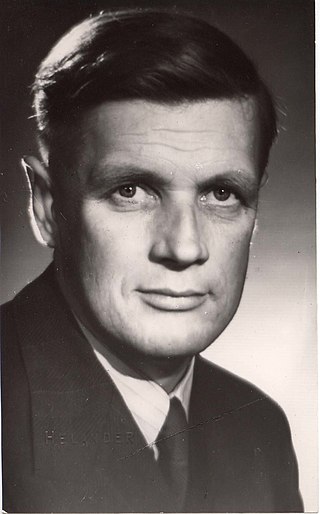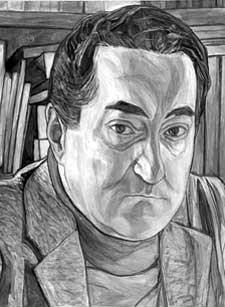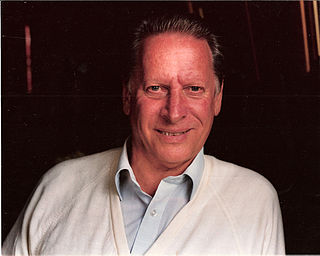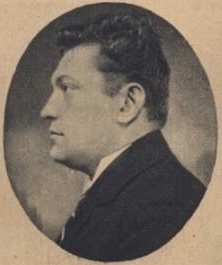Symphonies
The Symphony No. 1 in E minor (a student work composed during 1962–63 whilst Strutt was at the Royal Academy of Music, London) was submitted for the Division V Composition Examination in 1964 and was awarded the Manson Bequest for Composition. A four-movement large-scale piece for large orchestra (including 2 basset horns, piano, organ, 8 French horns, 4 trumpets, and a large body of strings), and lasting one hour, it is dedicated to the memory of the great Victorian engineer Isambard Kingdom Brunel, whose achievements had impressed the composer and were a source of inspiration to him.
The money from the Manson Bequest enabled the composer to spend the summer in the Highlands of Scotland at Loch Kishorn, in Wester Ross, where he was able to make good headway on the composition of the symphony No. 2 in C minor, also in four movements. Scored for an orchestra of more conventional size this work plays for some 57 minutes, and includes a chorus singing wordlessly in the second movement, and, in the finale, singing a text of one line only, taken from Virgil's epic, the Aeneid , Sunt lacrimae rerum, et mentem mortalia tangunt ("These are the tears of things which pierce the universal heart"). The second movement is based on the Romanesca bass as a passacaglia theme, and the following slow movement attempts to reflect an experience which the composer had during a highland holiday. One evening while staying at the Carbisdale Castle youth hostel on the Firth of Sutherland he walked up the hill behind the castle and was deeply impressed by the total and absolute silence: no sound of human voices, or bird calls, no mechanical noise, and not even the sound of the wind. Paradoxically, then, the music attempts to convey the impression of silence. The original part for organ in the score was minimal, and was removed in 1991 on the revision [3] of the symphony. The score was taken on a visit that Strutt made to the home of the composer Havergal Brian in Shoreham-by-Sea, and was read through by Brian for his approval as the dedicatee. This happened a couple of years before Brian's death in the 1970s.
With his Symphony No.3 in E-flat major subtitled "Visions of Albion" Strutt moved into the world of William Blake, and expanded his own symphonic ambitions even further. In seven movements for large orchestra (including quadruple woodwind, a quartet of saxophones, 6 horns, 5 trumpets, harpsichord, two mandolins, two harps, organ, as well as a tenor soloist, a boys' two-part choir and a double mixed chorus), and lasting 75 minutes, this work clearly betrays the influence of Mahler.The inspirational origin of the work lay, however, in the simple act of walking along a very rocky and boulder-strewn shore at Loch Kishorn during his stay there in 1964, and observing the dense texture of rocks and vegetation which translated itself into a similar musical texture forming part of the first movement entitled "Vision of Nature". Most of the movements are prefaced with quotations from William Blake, in this case "All things begin and end in Albion's Ancient Druid Rocky Shore" from his prophetic poem Jerusalem:The Emanation of the Great Albion. Movement II "Camelot" bears the quotation "Great Things are done when Men and Mountains meet;/This is not done by Jostling in the Street". Movements III and IV are both songs. III "The Schoolboy", and IV "The Garden of Love" are settings of Blake poems, the first for boys'choir, and the second for tenor solo.Movement V "The Holy Oblation" has prominent parts for harpsichord and trumpets, and is prefaced with the Blake quotation "What is Grand is necessarily obscure to Weak men. That which can be Explicit to the Idiot is not worth my care". The sixth movement "Avalon", another reference to the Arthurian legends, is the real slow movement; its prefatory quotation is "We impose on one another, and it is but lost time to converse with you whose words are only Analytics".The Finale "The New Jerusalem" is prefaced "Without Contraries is no progression", alluding to the use by the composer of a structural device known as progressive tonality. The movement is structured around the augmented fourth interval between A minor and E-flat major. The text used is the one immortalized by Sir Hubert Parry in his setting of it called "Jerusalem", but in this symphony it is used in a fugal manner, with unaccompanied boys' voices in a fugal exposition heralding the final peroration. The composer dedicated this work to his parents, Edward and Stella Strutt, as a mark of respect and recognition for the role they played in providing him with material support for his musical activities.
The score [4] was completed on 1 August 1967 at Park Croft Cottage, Rackwick, on Hoy, Orkney, and the first movement having been completed on 4 June 1966 at Shirva Hut on Fair Isle, Shetland. The title of the first movement and the Blake quotations (Movements II-VII) were all part of the original conception, but the titles of movements II, V, VI, and VII were added in 1979 after the composer had read Geoffrey Ashe's book [5] on King Arthur's Camelot. The subtitle of the entire work "Visions of Albion" was also added at that time.
With the Symphony No. 4, Kenosis, completed in 1986, Strutt moved right away from tonality as a source of structural method, and the composition consequently exhibits a high degree of atonality. This one movement symphony, lasting 20 minutes, features a large array of percussion instruments (marimba, bass marimba, vibraphone, xylophone, crotales, tubular bells, Swiss cowbells, tuned gongs, glockenspiel, tamtam, side-drum, suspended cymbal, wood-block, clash cymbals, bass drum, tambourine, wind machine and güiro) set in a normal sized orchestra (triple woodwind, etc.). In fact, 78 players are required in all, including four percussionists. The "Kenosis" subtitle refers to a theological concept which centres on the emptying of the self, such as Jesus Christ is considered to have done.
The Symphony No.5 in D major was written before No. 4, but was numbered after it since the composer conceived the fourth first. The dedication is to Edward Winston Watson, and was added to the score on 8 November 1980 as a token of esteem and friendship, and in recognition of his provision of support during the composition of the work, which took place at the Villa Clos Collonges in Territet, Montreux, in Switzerland in 1973. The work is in three movements, and the underlying structural concept is a transition from serialism returning to tonality in the finale, this tracing an emotional journey from relative chaos and turmoil into restful tranquility. It is scored for a large orchestra of 99 players and lasts 24 minutes.
Strutt's Symphony No.6 in E-flat minor "Eclogues from a Vanished Land" plays for just 40 minutes and is intended to evoke the lost world of Edwardian rural England, especially the countryside which would have been known to the folk-song collectors, Cecil Sharp, Ralph Vaughan Williams and Percy Grainger. The Vanished land is of course England, but that particular England. The first of the three movements is entitled "ROUNDELAY:'Under the Greenwood Tree...'". Prefaced by the literary quotation "...and this prayer I make, / Knowing that Nature never did betray / The heart that loved her,..." (lines 121–123 from Wordsworth's "Tintern Abbey"), this movement is obviously from its title intended to evoke the world of Thomas Hardy. A curious point regarding this first movement is that the conductor, the late Vernon Handley, rejected it for performance on the grounds that there was just one bar for the second violin in the first movement which was too difficult to play!
The second movement "TRIPTYCH:'The Mirror of Venus' (after Sir Edward Burne-Jones)' is in three sections: (i) ELEGY, (ii) SCHERZO (founded on the English folk tune "Staines Morris"), and (iii) "The Metamorphosis of Narcissus" (after Salvador Dalí). "Staines Morris" is the only actual folk tune used in the work. The title of the "TRIPTYCH" provides a clue to the structure of the movement, in that Burne-Jones' painting shows a group of Pre-Raphaelite maidens gazing at their own reflections in a pool of water. The three sections form a musical palindrome – the music of the "Metamorphosis of Narcissus" (also a painting showing a youth gazing at his reflection in a pool) is the reverse of the "ELEGY", and hence the "SCHERZO", where the forward-moving music starts to reverse.
The third movement, "FINALE.Three Worlds" (after M.C. Escher and with a title also referring to a visual work depicting reflections in water) is also subdivided into three sections: (i) PROLOGUE "A Future IN MEMORIAM"; PERPETUUM MOBILE: and EPILOGUE "In a Country Churchyard" (which is referring to the famous poem by Thomas Gray evoking yet again the idea of "eclogues from a vanished land" which pervades the whole composition).
Symphony No.7 in G minor ("Athonite") lasts for one hour, and is in three movements: I "Pilgrimage", II "Ek Batheon" (the Greek, Έκ βαθέον, meaning "from the depths", or in Latin, "de Profundis") and III FINALE "The Garden of the Panaghia", referring to the Greek Orthodox monastic idea that the peninsula Mount Athos (Άγιον Όρος, Agion Oros) forms a garden for the all-holy one, the Theotokos, or Mother-of-God. Strutt being a member of the society The Friends of Mount Athos (FoMA) has made many visits to Mount Athos, finding it a holy place of inspiration. The symphony was conceived in the early 1990s, but not scored until 2003. "Pilgrimage", the title of the first movement, simply represents the feelings of a visiting pilgrim to the Holy Mountain. "Ek Batheon" however is a much more profound study of the torments of the soul experienced by the solitary hesychast, or hermit, living in utter and total simplicity and wrestling with temptation, arrested by the attempts of the devil to conquer him. In this movement the orchestra is divided into two parts, and the musical events portray a terrifying state of mind. The last movement includes a boys' and men's chorus who sing six of the Orthodox Apolytikia of the Resurrection, [6] and is an attempt to portray the beauty and peace of the Holy Mountain as it appears to an outside visitor.
The Symphony No. 8 ("Orkney Choral Symphony") sees the composer back on home ground – Orkney – where he has lived since 1970. More of a song cycle, the seven movements are settings of Orcadian poetry. The movements are: I-PROLOGUE:"Orkney Summer"(SONNET I), the text by Robert Rendall;II SONG 1: "Cataface" (the Scots for the short-eared owl), to text by Harriet Campbell; III-LAMENT:"The Brig o' Waithe", the text by Ann Scott-Moncrieff describing the civilian casualty in World War II Britain when a German aircraft returning to base after attempting to attack Scapa Flow randomly released its bombs over Orkney; IV-SONG 2 "Sleep! Baby, sleep!", the text by James Morrison; V-INTERMEZZO "Merlin" (SONNET II), the text by Edwin Muir; VI-PANEGYRIC "For Ann Scott-Moncrieff (1914–43)", the text by Edwin Muir and VII-EPILOGUE "The Peace of Orkney", the text by John Skea. The total duration of the composition is just under 25 minutes and the score was completed in 1999.
Strutt's Symphony No. 9 in D minor ("The Fountain of Tears") was completed in 2004. It is a two-part symphonic study of the Spanish poet Federico García Lorca. Part I comprises nine settings of his poetry, for soprano and baritone soli, and SATB choir, and orchestra. Part II, entitled "Ainadamar (18/ix/1936)", (the name and date of the place where Lorca's execution took place), is purely orchestral and can be considered to be a symphonic poem on the life and death of the poet. In part I the poems set are I "Ballad of the Little Square", II "Hunter", III "Little Balade of the Three Rivers", IV "Song" (to Claudia Gillen), V "Village", VI "Song", VII "Song of the Rider" (1860), VIII "CASIDA of the Rose",and IX "The Lament". This symphony may also be considered a quasi concerto in that there is a prominent part for the acoustic Spanish guitar. The title of the composition, "Fountain of Tears" is the actual meaning of Ainadamar (Arabic, Ayn al-Dam).













